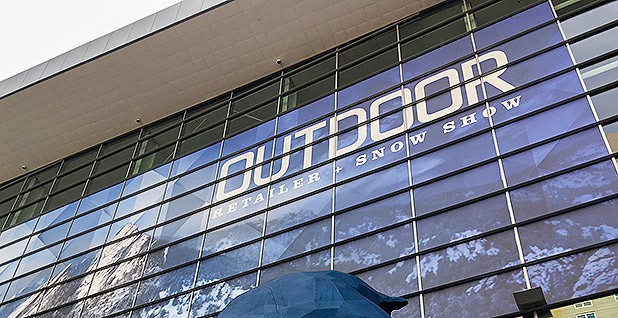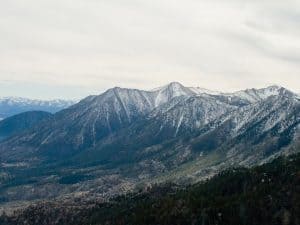We should start a list of enviro’s willing to use falsehoods to obstruct sound/healthy, sustainable forest ecosystems – here are two strong candidates:
Enviros (Oregon Wild and the Greater Hells Canyon Council) indirectly claim supernatural powers by being able to discern the false motives of others and decide what research is good and what is bad in spite of their lack of any impartiality, broad understanding of established forest science or background sufficient to discern relative value of evolving research.
Dr. James Johnston has been quoted in the Wallowa County Chieftain as outing certain falsehoods perpetrated by these two groups. Selected facts per the Chieftain and quotes from Dr. Johnston are as follows (my comments are in italics and parentheses):
A) Per the Chieftain:
1) “The corridor project is a U.S. Forest Service plan to use both hand and mechanical treatments to ostensibly mitigate wildfire in the area west of Lostine, while the two activist groups claim it is a thinly-veiled excuse to commercially log the corridor.”
– (i.e. Enviro’s claim to be able to discern False Motives of others)
B) Per Dr. Johnston after reading the FAQs published by the two enviro groups:
1) “One-hundred percent of the project is explicitly designed to address safety issues. Oregon Wild may believe that only 10 percent of the project is appropriate to address safety issues, but that’s just their opinion. … the U.S. Forest Service has considerable expertise in managing fire and risks to human health and property while stating that Oregon Wild is not drawing on any particular fire management expertise. Johnston also said he was not aware of any expert in fire and fuel management that endorses their claim that only 10 percent of the project addresses safety issues.”
– (i.e. Enviro’s claim that their opinion is fact without supplying objectively determined evidence.)
2) “The professor also questioned FAQ statements that the project will prioritize commercially logging some of the largest most fire-resistant trees out of the forests over stands of smaller trees that could benefit from thinning, or that scientific evidence indicates that logging in that type of forest will not decrease the severity of fire but would likely increase fire severity risk in the forest. … 100 percent of the proposed logging targets small fire- intolerant forest structure, and a huge body of scientific evidence demonstrates that removing those trees can reduce fire severity and make wildfires more manageable and less of a threat.”
– (i.e. Enviro’s claim that faux science is good and established science is bad. Again, where is there evidence?)
3) ““Oregon Wild badly misrepresents the science,” Johnston said. “The one paper that they cite clearly states that fuel reduction thinning such as that planned for the Lostine River Corridor is appropriate in cases of unnaturally high fuel loading. This is precisely the case in the Lostine River Corridor.””
– (i.e. Enviro’s cite references that don’t support their case. How could that occur unless it was a deliberate attempt to deceive or an example of their ignorance on the subject?)
4) “Dr. Johnston also noted that the Forest Service has documented that the corridor currently contains far more trees than were present before fire was excluded from the area at the end of the 19th century.
“There are very high fuel loadings that pose a significant risk to old-growth forest structure,” Johnston said. “Much of the old-growth larch in the corridor has died or is dying as result of competition-induced stress. Oregon Wild presents zero evidence that thinning will increase fire severity. All of the available evidence suggests that thinning and prescribed fire will reduce fire severity and protect old growth.””
– (i.e. Enviro’s claim that their opinion is fact without supplying objectively determined evidence.)
– (i.e. Enviro’s claim that faux science is good and established science is bad. Again, where is there evidence?)
5) “Another statement in the FAQ gave Johnston pause: “Not only will this project not stop a fire, the proposed industrial logging prioritizes many of the most mature fire-resistant stands in the canyon over those that might benefit from thinning.”
“The Forest Service is only planning to treat 450 acres within the corridor, which is a tiny percentage of the total land area and a tiny percentage of the total area that probably should be treated to reduce risk of uncharacteristic insect, disease and fire effects,” he said. Johnston added that all 450 acres of thinning is targeting the most overgrown stands.”
– (Again, enviro’s are unabashedly publishing outright falsehoods and making mountains out of molehills to mislead the public; spend taxpayer dollars on insignificant issues; and delay the implementation of sound, sustainable forest management where appropriate to reduce the risk of loss of existing federal forests prized by all Americans. And for what? Maybe, if we are lucky, another forest that will look like a huge clearcut in the beginning and possibly produce an inferior forest because of all of the erosion of valuable topsoil and dead/destroyed root systems resulting from the baked soils. Yet, they will protest any suitable use of clearcuts even if the only impact is a deterioration of the viewshed for a limited time period. Or maybe, the denuded land will become another grassland or maybe even another Grand Canyon. They have outed themselves. Once they had clear but mistaken goals to “preserve specific old growth forest ecosysytems/types” without any plan for regeneration to replace those dying stands/ecosystems. Now their double talk and lies have turned 180 degrees and have contradicted all of their past claims and revealed that they don’t really care about protecting existing forests. In fact they don’t care what happens to the land. The only thing that they seem to care about is being important, maintaining their power base (fiefdom), and raising funds to keep certain enviros employed.)



